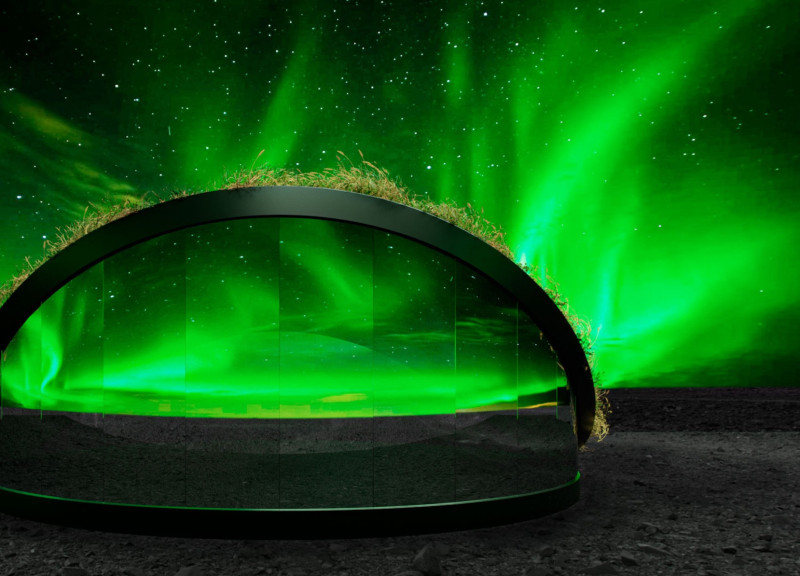5 key facts about this project
The observation platform near Myvatn Lake in Iceland sits within the unique geothermal landscape of the Lava Fields. Designed as a lookout point, the structure embodies the merging of Icelandic historical heritage with modern architectural practices. The building's form follows the shape of the nearby volcano, allowing it to blend with the natural surroundings.
Design Concept
The design focuses on connecting the architecture with the landscape. The platform's shape reflects the characteristics of the volcano, promoting a relationship between the built environment and nature. This connection goes beyond visuals, incorporating considerations that aim to reduce the ecological impact of the structure.
Energy Efficiency and Sustainability
Energy efficiency is a prominent aspect of the platform's design. An effective shell design eliminates cold bridges, which enhances thermal performance and lowers energy demands. The platform uses wind energy, harnessed and stored within the floor, aligning with environmentally responsible energy practices.
Materials and Construction Techniques
Materials for the platform balance modern and traditional influences. The exterior glazing is designed to be mirrored, reflecting the landscape while allowing natural light into the interior. Turf is used to provide insulation, linking the design to historical Icelandic building methods. The prefabricated shell features negative Gaussian curvature, enabling efficient assembly on site and contributing to the overall design fluidity.
Interactive Elements
The platform includes technology that encourages visitor interaction. Through projection technology, users can access educational content about Icelandic culture and geology by scanning QR codes. This feature enriches the experience, helping visitors engage meaningfully with their surroundings.
The hidden lighting in the ceiling follows the unique contours of the volcano, enhancing the visitor experience. This element reinforces the connection between the architecture and the natural landscape, providing ambient illumination that complements the overall design.


















































